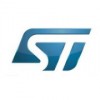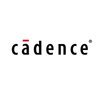Filter interviews by
Texas Instruments Analog Design Engineer Interview Questions and Answers
11 Interview questions
Adding a resistor to a capacitor changes the frequency response of the circuit.
The cutoff frequency of the circuit decreases with increasing resistance.
The circuit becomes more attenuative at higher frequencies.
The time constant of the circuit increases with increasing resistance.
The circuit becomes more stable and less prone to oscillation.
Example: A low-pass filter with a 10uF capacitor and a 1kohm resistor has ...
Adding a capacitor in parallel to a resistor changes the frequency response of the circuit.
The cutoff frequency of the circuit decreases as the capacitance increases.
The circuit becomes a high-pass filter with a -20dB/decade slope above the cutoff frequency.
The impedance of the capacitor decreases as frequency increases, allowing more current to flow through the circuit.
The resistor and capacitor form a voltage di...
An RC lowpass filter allows low-frequency signals to pass while attenuating higher frequencies.
Components: Resistor (R) and Capacitor (C) in series.
Output taken across the capacitor.
Cutoff frequency (fc) is determined by fc = 1/(2πRC).
Common applications: Audio processing, signal conditioning.
Example values: R = 1kΩ, C = 100nF gives fc ≈ 1.59 kHz.
T-flip flop mod3 counters are used for counting in digital circuits, resetting after reaching a count of 3.
A T-flip flop toggles its state on each clock pulse when T=1.
For a mod3 counter, the states are 00, 01, and 10, representing counts 0, 1, and 2.
After reaching the count of 2 (10), the next toggle resets the counter back to 0 (00).
Example: If T=1, the sequence of outputs will be 00 -> 01 -> 10 -> 00.
Understanding diode networks involves analyzing ideal vs non-ideal behaviors in circuits.
Ideal diodes have zero forward voltage drop and infinite reverse resistance.
Non-ideal diodes exhibit a forward voltage drop (e.g., 0.7V for silicon) and leakage current.
In an ideal diode network, current flows freely in one direction without loss.
In a non-ideal diode network, consider the effects of temperature on diode perfor...
Cascade structure is used to improve gain, bandwidth, and linearity of amplifiers.
Cascade structure combines multiple amplifier stages to achieve higher overall gain.
Each stage can be optimized for a specific frequency range, improving bandwidth.
Cascade structure also reduces distortion and improves linearity.
Examples include cascode amplifiers and differential amplifiers.
Cascade structure is commonly used in high...
Temperature has a significant effect on leakage current in analog circuits.
Leakage current increases with temperature due to increased carrier generation and diffusion.
Higher temperatures can cause increased leakage current through reverse-biased junctions.
Temperature coefficients are used to quantify the change in leakage current with temperature.
Thermal management techniques are employed to minimize the impact o...
An RC network with a constant current source is used to create a voltage output that is proportional to the input current.
RC network consists of a resistor (R) and a capacitor (C) connected in series or parallel.
Constant current source ensures a steady current flows through the network.
The voltage output across the RC network is determined by the time constant (RC) and the input current.
This configuration is commo...
The output response of RLC circuits is the behavior of the circuit's output voltage or current over time.
The output response depends on the values of the resistance (R), inductance (L), and capacitance (C) in the circuit.
RLC circuits can exhibit different types of responses, such as overdamped, underdamped, or critically damped.
The response can be analyzed using differential equations or Laplace transforms.
For exa...
Complex RC circuits are circuits that contain resistors and capacitors in a series or parallel configuration.
The time constant of a complex RC circuit can be calculated using the product of resistance and capacitance.
Complex RC circuits can be used in filters, oscillators, and timing circuits.
The behavior of a complex RC circuit can be analyzed using circuit analysis techniques such as Kirchhoff's laws and nodal a...
Texas Instruments Analog Design Engineer Interview Experiences
11 interviews found
Easy if you managae time well otherwise time will be not sufficient
(2 Questions)
- Q1. Introduction about myself
- Ans.
I am an Analog Design Engineer with a passion for innovative circuit design and a strong background in signal processing and electronics.
Educational background in Electrical Engineering with a focus on analog circuits.
Experience in designing low-noise amplifiers for audio applications.
Proficient in using simulation tools like SPICE for circuit analysis.
Worked on a project involving RF circuit design for wireless commun...
- Q2. Technical questions on basics
I applied via Campus Placement
(2 Questions)
- Q1. RC Circuit Question
- Q2. Op-Amp Question
Interview Preparation Tips
(2 Questions)
- Q1. Solve circuit 1
- Q2. Solve circuit 2

Basic questions of aptitude
(3 Questions)
- Q1. Basic questions of circuit theory and analog
- Q2. Bode plot questions
- Q3. Rc network with constant current source
- Ans.
An RC network with a constant current source is used to create a voltage output that is proportional to the input current.
RC network consists of a resistor (R) and a capacitor (C) connected in series or parallel.
Constant current source ensures a steady current flows through the network.
The voltage output across the RC network is determined by the time constant (RC) and the input current.
This configuration is commonly u...
I applied via Campus Placement and was interviewed in Jul 2023. There were 3 interview rounds.

It was very nicee, time was very less
(1 Question)
- Q1. Basic diode, op amp circuits, ADC, DAC
I applied via Campus Placement and was interviewed in Aug 2022. There were 2 interview rounds.
90 minutes with 20 questions of Analog and Aptitude each. Topics are Basic Network Theory, Diode, Op-amps, etc. Topics may vary place-to-place.
(6 Questions)
- Q1. Questions are cumulative: Draw a Lowpass filter (RC)
- Ans.
An RC lowpass filter allows low-frequency signals to pass while attenuating higher frequencies.
Components: Resistor (R) and Capacitor (C) in series.
Output taken across the capacitor.
Cutoff frequency (fc) is determined by fc = 1/(2πRC).
Common applications: Audio processing, signal conditioning.
Example values: R = 1kΩ, C = 100nF gives fc ≈ 1.59 kHz.
- Q2. Add capacitor parallel to one resistor and tell frequency response
- Ans.
Adding a capacitor in parallel to a resistor changes the frequency response of the circuit.
The cutoff frequency of the circuit decreases as the capacitance increases.
The circuit becomes a high-pass filter with a -20dB/decade slope above the cutoff frequency.
The impedance of the capacitor decreases as frequency increases, allowing more current to flow through the circuit.
The resistor and capacitor form a voltage divider...
- Q3. Add resistor to the capacitor and tell frequency response
- Ans.
Adding a resistor to a capacitor changes the frequency response of the circuit.
The cutoff frequency of the circuit decreases with increasing resistance.
The circuit becomes more attenuative at higher frequencies.
The time constant of the circuit increases with increasing resistance.
The circuit becomes more stable and less prone to oscillation.
Example: A low-pass filter with a 10uF capacitor and a 1kohm resistor has a cut...
- Q4. T-flip flop mod3 counters and reset
- Ans.
T-flip flop mod3 counters are used for counting in digital circuits, resetting after reaching a count of 3.
A T-flip flop toggles its state on each clock pulse when T=1.
For a mod3 counter, the states are 00, 01, and 10, representing counts 0, 1, and 2.
After reaching the count of 2 (10), the next toggle resets the counter back to 0 (00).
Example: If T=1, the sequence of outputs will be 00 -> 01 -> 10 -> 00.
- Q5. A tricky diode based network question with both cases(ideal and non-ideal diode)
- Ans.
Understanding diode networks involves analyzing ideal vs non-ideal behaviors in circuits.
Ideal diodes have zero forward voltage drop and infinite reverse resistance.
Non-ideal diodes exhibit a forward voltage drop (e.g., 0.7V for silicon) and leakage current.
In an ideal diode network, current flows freely in one direction without loss.
In a non-ideal diode network, consider the effects of temperature on diode performance...
- Q6. Aptitude question of 1000 bottles and one poisoned
Interview Preparation Tips
- Network Theory
- Opamp
- Filters
- Diode

(2 Questions)
- Q1. Basic technical qns from analog and few digital
- Q2. Qns about mosfets, ce cb config, some c questions
(1 Question)
- Q1. Projects based qns, basic analog qns, and few digital ones.
Interview Preparation Tips
know everything in your resume very well. communicate confidently. be prepared with basic analog subjects and digital to an extent
I applied via Company Website and was interviewed in Aug 2022. There were 2 interview rounds.
It was easy with some tricky question
(3 Questions)
- Q1. Question on MOSFET Electrical network Analog electronics
- Q2. Why cascade structure is used
- Ans.
Cascade structure is used to improve gain, bandwidth, and linearity of amplifiers.
Cascade structure combines multiple amplifier stages to achieve higher overall gain.
Each stage can be optimized for a specific frequency range, improving bandwidth.
Cascade structure also reduces distortion and improves linearity.
Examples include cascode amplifiers and differential amplifiers.
Cascade structure is commonly used in high-freq...
- Q3. Why MOSFET over others
- Ans.
MOSFETs offer high efficiency, fast switching, and low power consumption, making them ideal for modern electronic applications.
High input impedance reduces loading effects, allowing for better signal integrity.
Fast switching speeds enable high-frequency applications, such as RF amplifiers.
Low on-resistance minimizes power loss, making MOSFETs suitable for power management.
Thermal stability allows for reliable operation...
Interview Preparation Tips
- Analog Electronics
I applied via Campus Placement and was interviewed before Sep 2021. There was 1 interview round.
(1 Question)
- Q1. Analog electronics related questions RC CIRCUIT
Interview Preparation Tips
Interview Questionnaire
8 Questions
- Q1. Output Response of RLC circuits
- Ans.
The output response of RLC circuits is the behavior of the circuit's output voltage or current over time.
The output response depends on the values of the resistance (R), inductance (L), and capacitance (C) in the circuit.
RLC circuits can exhibit different types of responses, such as overdamped, underdamped, or critically damped.
The response can be analyzed using differential equations or Laplace transforms.
For example,...
- Q2. Effect of temperature on Leakage current
- Ans.
Temperature has a significant effect on leakage current in analog circuits.
Leakage current increases with temperature due to increased carrier generation and diffusion.
Higher temperatures can cause increased leakage current through reverse-biased junctions.
Temperature coefficients are used to quantify the change in leakage current with temperature.
Thermal management techniques are employed to minimize the impact of tem...
- Q3. Some Tricky questions on KCL and KVL
- Q4. Complex RC circuits
- Ans.
Complex RC circuits are circuits that contain resistors and capacitors in a series or parallel configuration.
The time constant of a complex RC circuit can be calculated using the product of resistance and capacitance.
Complex RC circuits can be used in filters, oscillators, and timing circuits.
The behavior of a complex RC circuit can be analyzed using circuit analysis techniques such as Kirchhoff's laws and nodal analys...
- Q5. Effect of opamp's bandwidth
- Ans.
The bandwidth of an opamp affects its ability to amplify high-frequency signals.
Opamp bandwidth determines the range of frequencies it can amplify effectively.
A higher bandwidth allows the opamp to amplify higher frequency signals accurately.
A lower bandwidth limits the opamp's ability to amplify high-frequency signals.
Opamp bandwidth is typically specified in terms of the -3dB frequency.
Bandwidth can be improved by us...
- Q6. Question on power dissipation in a CMOS circuit
- Q7. Bode Plot Analysis
- Q8. One valid reason, why you won't go for a MS, apart from financial crisis
- Ans.
Prefer gaining industry experience over academic research
Desire to gain practical experience in industry
Interest in applying knowledge in real-world projects
Preference for hands-on learning and problem-solving in a work environment
Interview Preparation Tips
Experience: Shortlisted mostly on the basis of Percentage. Anyone above 70% was selected.
Round: Technical Interview
Experience: Tested basic concepts of Electronics.
Round: Technical Interview
Experience: Interview to test some advanced concepts.
Skill Tips: While appearing for TI, be very thorough with the concepts of RC circuits. This is the first thing they test.
Skills: Analog Circuits, Analog And Digital Knowledge, RC Circuits
College Name: Netaji Subhas Institute Of Technology, Delhi
Top trending discussions






Texas Instruments Interview FAQs
Some of the top questions asked at the Texas Instruments Analog Design Engineer interview -
Tell us how to improve this page.
Texas Instruments Interviews By Designations
- Texas Instruments Analog Design Engineer Interview Questions
- Texas Instruments Analog Layout Engineer Interview Questions
- Texas Instruments Analog Engineer Interview Questions
- Texas Instruments Intern Interview Questions
- Texas Instruments Digital Design Engineer Interview Questions
- Texas Instruments Design Engineer Interview Questions
- Texas Instruments Embedded Software Engineer Interview Questions
- Texas Instruments Digital Engineer Interview Questions
- Show more
Interview Questions for Popular Designations
- Senior Engineer Interview Questions
- Design Engineer Interview Questions
- Project Engineer Interview Questions
- Process Engineer Interview Questions
- Senior Design Engineer Interview Questions
- Electrical Design Engineer Interview Questions
- Structural Design Engineer Interview Questions
- Junior Design Engineer Interview Questions
- Show more
Overall Interview Experience Rating
based on 6 interview experiences
Difficulty level
Duration
Analog Design Engineer Interview Questions from Similar Companies
Texas Instruments Analog Design Engineer Reviews and Ratings
based on 17 reviews
Rating in categories
|
Analog Design Engineer
125
salaries
| ₹21.9 L/yr - ₹39 L/yr |
|
Software Engineer
76
salaries
| ₹18 L/yr - ₹32 L/yr |
|
Senior NPD Engineer
67
salaries
| ₹20.4 L/yr - ₹25.8 L/yr |
|
Digital Design Engineer
53
salaries
| ₹19.5 L/yr - ₹33 L/yr |
|
Design Engineer
46
salaries
| ₹12.8 L/yr - ₹26.5 L/yr |

Qualcomm

Intel

Apar Industries

Molex
- Home >
- Interviews >
- Texas Instruments Interview Questions












